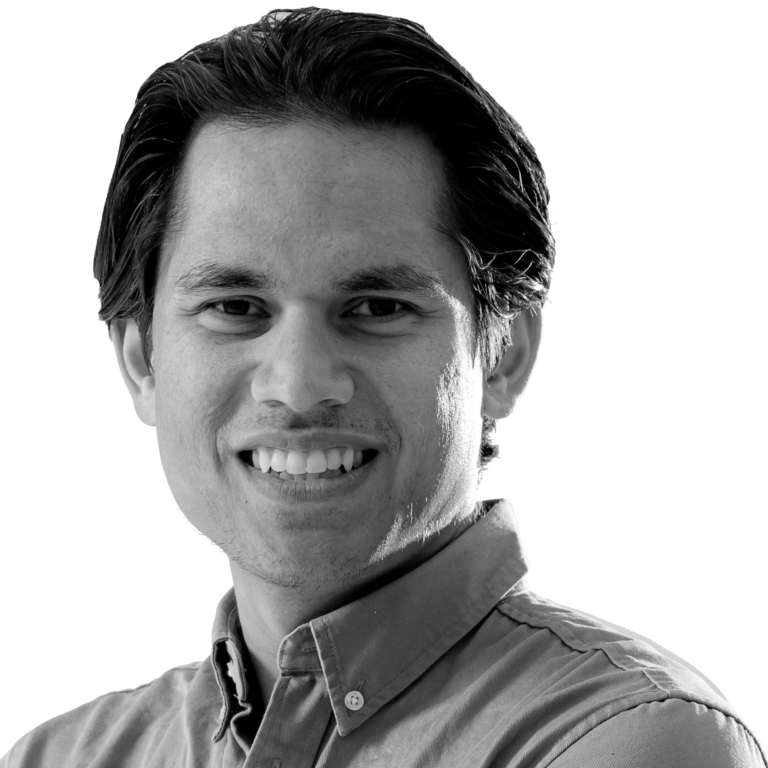Jeff David, the 59-year-old technical mastermind behind Quantum’s GP700, has MOTOR in the passenger seat of his cherry red hypercar.
He’s keen to demonstrate its performance and we’re just as enthusiastic. But before the ensuing adrenalin hit, basic survival instinct forces us to recall a couple of facts about the open-wheeled roadster.
Behind us lives 522kW worth of engine. Around it, without passengers, exists 695kg of mass. Together they account for a power-to-weight ratio (751kW/tonne) more than double that of a Lamborghini Aventador and that towers over a Bugatti Veyron’s. Yet the GP700 wasn’t devised with the backing of an advisory board in Wolfsburg. It was built in Jeff’s shed.
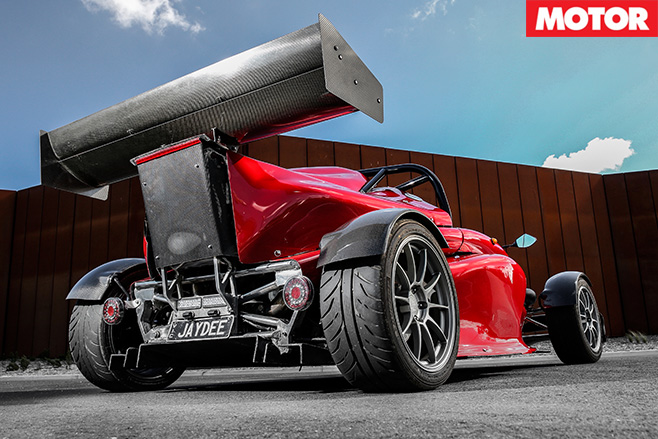
After a couple of Hail Marys, Jeff finds the throttle and then it happens. There’s an explosion of brutal speed and sound that launches an attack on you so visceral, it’s as if your ribcage closes like a bear trap, the acceleration so instant and unrelenting your organs squeeze.
Gear changes from the six-speed paddle-shift Holinger ’box provide no relief to the maniacal surge, and the engine – connected to not one, but two superchargers – erupts into a noise that sounds like a four-cylinder chainsaw pushing out its last rep on a bench press.
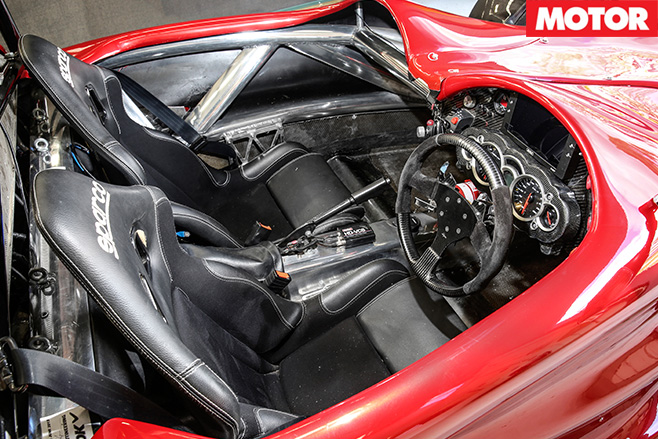
In the aftermath, emotions range from exhilaration to mild terror, which Jeff says is part of the package. “It’s a lot of fun, but a lethal weapon in the wrong hands, and you’ve got to respect the car. It’s got traction control, but it won’t save you if you arrive at a corner and you’re going twice as fast as you should.”
The notion of ‘twice as fast’ is easy to grasp when you consider the performance claims. Quantum boldly says 0-100km/h is dispatched in 2.6sec, 0-160km/h in 5.0sec, and that you’ll experience 1.2g on the way there.
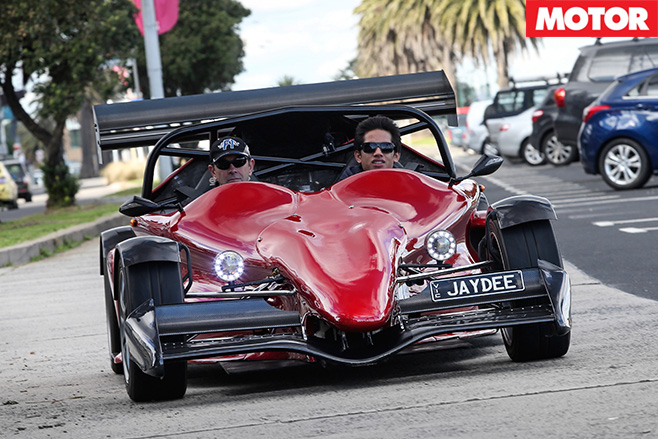
And push they did. Nestled behind the driver is a Honda K-Series engine that’s been taken to a different stratosphere of performance from what it ever saw in road form. Its original 2.4-litre capacity has been stretched to 2.6, mainly done by lengthening its rods.
“It’s undersquare because the bores are too close together, because we’re at the limit of bore spacing,” Jeff says, before explaining how it withstands the huge forces it produces. “It’s got Darton sleeves, line bored – they’re nitro Funny Car sleeves, basically.”
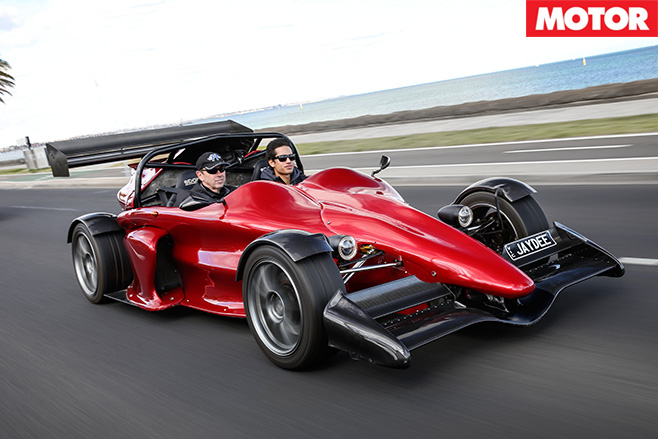
“With a single centrifugal supercharger, 60-100 kays was about 1.3 seconds. When you drove the car it was accelerating at about 0.7g, then it would build up until 1.2gs at the redline.
“You’ve come out of a corner on a windy road at 60km/h and you’ve opened it up, halfway down the straight to the next corner, the car’s acceleration’s rate has doubled, and it was really hard to drive.” The current arrangement has one supercharger blowing into the other, so the engine produces full boost much sooner but still holds that pressure all the way to its 8000rpm redline.
“[Two superchargers] reduces the acceleration time from 1.3 seconds down to 0.94 [for 60-100km/h] and we’re starting to get into times that are hard to comprehend,” Jeff adds.
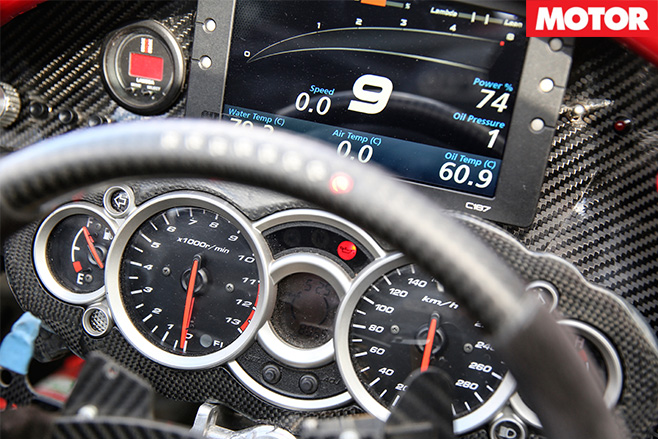
“We’ve tried very hard to avoid saying Ariel Atom, the reason being, not because we haven’t done anything wrong and our design is completely new from the ground up, but we don’t want to be compared to [Ariel] so much because we’re completely a unique car; there’s nothing based on them anymore, there are no components that are the same. It’s a similar style, but that’s where it ends.”
Andrew’s referring to Jeff’s first project, Ariel New Zealand’s damaged demonstrator Atom that was deemed ineligible for Australian Design Rules.
“I don’t want to focus too much on it,” adds Jeff, “because the purpose of doing it was to learn the fundamentals of car dynamics with a rear-engine, transverse-mounted car like this.”
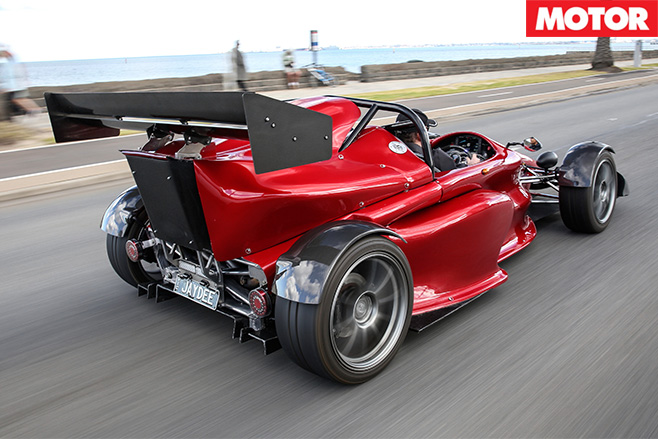
With the handling improved he then started to stretch the realms of power, which then exposed the car’s new limits. “When I got to 600 wheel horsepower you could feel the chassis walking around underneath you when accelerating,” Jeff explains. And, of course, there was the other issue.
“I got sick of people looking at it and saying ‘it’s an Ariel Atom’.
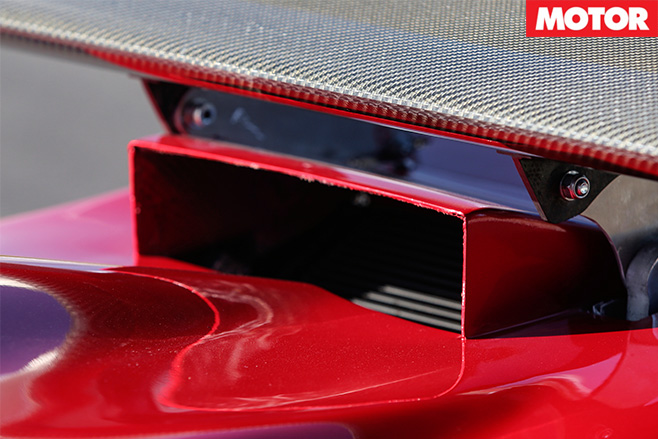
“So we then started from scratch, used all the information I’d learnt, created a computer model of the Quantum [GP700], ran it around the same track on the virtual simulation. It’s taken about four years to go from that to the car sitting here.”
In that time the Quantum has been developed as thoroughly as Jeff could manage, which has required the help of some well-known and -educated players.

Jeff’s broad ken in engineering is also inextricably linked with this car. He’s developed the adjustable, predictive traction control with an Autronic unit and MoTec software. With the help of a specialist he made the carbonfibre body, he designed and built the full aluminium chassis himself, and he’s drawn on years in motorbike racing to develop the car’s unique suspension tune that feels incredibly well sorted.

They’re world-beating figures. And that’s exactly why Jeff and Andrew will fly this living, breathing prototype to the Dubai International Motor Show this November, trying to find interest for the first customer-built GP700 which will be priced at US$695,000 – a hefty ask, no matter where you’re from.
“It’s very high if you compare us to an Ariel Atom, but it’s not very high if you compare us to a Ferrari FXX. We can’t really be compared to an FXX; we’re not Ferrari, and we’re not claiming our car is the same as one of theirs,” Andrew says.
“But we’re also not an Ariel Atom – the Atom doesn’t come with a sequential gearbox, it doesn’t have a custom traction control system, they haven’t pushed for quality on every single thing, they pushed for a price point.”
The word Ferrari and letters FXX do pop up more than once, thanks to the support package Quantum is offering that’s modelled after the FXX K’s or McLaren P1 GTR’s – two cars a few Dubai Motor Show goers might own.

The three-year package buys you 24-hour phone assistance, two days driver training, four days of on-site engineering team support (currently provided by either Andrew or David) and US$50K of replacement parts.
Andrew says it also includes road registration. “Part of that package is that we do the due diligences and try hard as we can to register the car, and that includes design changes within reason.”
If Quantum receives just one order they’ll build the car. It needs to sell two to make a profit, and will cap production at 10 a year.
It still needs to tie down suppliers for things like carbonfibre, but with the current GP700 basically a rolling blueprint for the customer car, which Jeff adds will be presented like an F1 vehicle in production form with every nut and bolt immaculate, Andrew’s confident this isn’t a problem.

Quantum’s certainly being ambitious. But whether the car sells or not, a lot has been achieved by the Davids. Many dream about building their own car, few do it, and even less in such a radical fashion as the GP700.
The story has consumed Jeff’s life for the past decade, and it’s possible it may do so for another. But with it here, frightfully fast, and comfortably road legal, he’s now ready for more than just MOTOR to join Quantum for the ride.
Quantum GP700
Specs
Body: 2-seat roadster Drive: rear-wheel Engine: 2564cc inline-4, DOHC, 16v, twin-supercharger Bore/stroke: 89 x 103.0mm Compression: N/A Power: 522kW @ 8000rpm Torque: 650Nm @ 7200rpm Power/weight: 751kW/tonne Transmission: 6-speed sequential Weight: 695kg Suspension: Double A-arms, push-rod actuated coil-overs, driver adjustable anti-roll bar. (f); double A-arms, push-rod actuated coil-overs, anti-roll bar (r) L/W/H: 4125/1740/1300mm Wheelbase: 2654mm Tracks: 1540/1527mm (f/r) Steering: rack-and-pinion Brakes: 310mm ventilated/drilled discs, 4-piston calipers (f); 280mm ventilated discs, 4-piston calipers (r) Wheels: 17 x 8.0-inch (f); 18 x 9.5-inch (r) Tyres: 235/45 R17 (f); 265/35 R18 (r) Dunlop Direzza Price: US$695,000 ($944,000)

